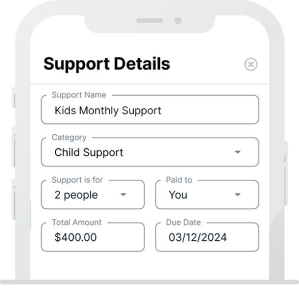custody schedules 60/40
When it comes to designing a custody arrangement that nurtures a child’s relationship with both parents post-divorce or separation, crafting a thoughtful 60/40 custody schedule can offer an optimal balance. This allocation of time allows a child to spend 60% of their time with one parent and the remaining 40% with the other, promoting a healthy bond with both, while also providing a structured routine. This article aims to dive deep into practical examples, guidelines, and advice for families seeking to implement a functional and beneficial 60/40 custody schedule.
What are the Key Elements of a 60/40 Custody Schedule?
Understanding the 60/40 split: How does it work?
In a 60/40 custody arrangement, one parent has the child for a significant majority of the time — approximately 60%, leaving the other parent with 40%. This split allows the child to have a primary residence while still maintaining ample parenting time with the other parent. The key is to calculate the division of days across the year so each parent can spend quality time during weekdays and weekends, fostering an environment for the child to thrive emotionally and socially.
Examples of common 60/40 schedules: 4-3 and every extended weekend
The 4-3 schedule and every extended weekend schedule are prominent examples of how a 60/40 custody arrangement can be structured. In a 4-3 custody schedule, one parent has the child for four days, while the other parent has them for three days, effectively alternating weeks. The every extended weekend schedule allows a child to spend every long weekend with one parent, typically from Thursday or Friday to Monday, with the rest of the week at the other parent’s home. Both options aim to balance the child’s time between parents, taking into account weekdays and weekend custody for varied interactions and experiences.
Choosing the right schedule: Factors to consider for both parents and children
Selecting the most appropriate custody schedule should be rooted in the child’s needs, the parents’ work schedules, the geographical distance between homes, and other family specifics. Achieving a balance that meets your family’s needs and lifestyle is crucial. It’s important to explore options and possibly consult with a professional to choose a plan that facilitates educational, social, and developmental opportunities for the child while also accommodating each parent’s ability to spend meaningful time with them.
How to Create a Balanced 60/40 Parenting Plan
Starting with a solid foundation: Basic principles of a parenting plan
A robust parenting plan is essential for implementing any custody schedule, especially a 60/40 split. Foundational elements include detailed overnights, holidays, and vacations, specifying physical custody arrangements. This establishes clear expectations and helps manage each parent’s time with the child, fostering a predictable environment which is paramount for the child’s wellbeing.
Incorporating flexibility: Managing holidays, vacations, and special events
While consistency is key in any custody schedule, the ability to flexibly manage holidays, vacations, and special events ensures that the child benefits from significant moments with both parents. Including provisions for these occasions within the parenting plan, while maintaining the overall balance of the 60/40 split, allows families to celebrate shared moments without conflict.
Adjusting the plan as children grow: Why revisiting the custody agreement is important
As children grow, their needs change. The custody arrangement that worked for a young child might not be as effective for a teenager with different social, educational, and extracurricular demands. Regularly revisiting and adjusting the parenting plan helps meet these evolving needs, maintaining an arrangement that continues to serve the best interests of the child over time.
The One parent
In many child custody arrangements, one parent is often granted physical custody, meaning the child spends the majority of their time living with that parent. This type of custody is known as sole physical custody, and it can have a significant impact on both the parent and the child’s day-to-day life. In these cases, the non-custodial parent may still be involved through visitation, but the child’s primary residence is with the custodial parent.
Parenting Schedules
When one parent has physical custody, it’s crucial to set up clear parenting schedules to help the child keep a strong relationship with both parents. These schedules specify the days and times the non-custodial parent will spend with the child, including weekend visits, holidays, and vacations. The aim is to provide the child with stability while allowing both parents to play an active role in their upbringing. Additionally, some flexibility can be included in the schedule to meet the needs of both the child and the parents.
Child’s Time Spent with One Parent
In a single-parent custody situation, the child typically lives most of the time with the custodial parent. This setup can influence various aspects of the child’s life, such as their education, social interactions, and daily habits. Although the non-custodial parent may still participate in decision-making and visitation, the child’s main residence is with one parent. This arrangement can sometimes create difficulties, particularly when both parents have strong views on the child’s upbringing or if there is a considerable distance between their homes.
Physical Custody and Its Implications
When one parent is awarded physical custody, they take on the responsibility for the child’s daily care, which includes their living conditions, healthcare, and overall well-being. In certain situations, the non-custodial parent might have partial custody or visitation rights, but the child primarily resides with the custodial parent. Physical custody plays a crucial role in child custody decisions, as courts emphasize the importance of providing the child with stability, security, and emotional support.
4-3 Custody Schedule vs. Every Extended Weekend: Which is Best?
Pros and cons of the 4-3 custody schedule
The 4-3 custody schedule offers a consistent exchange between parents, making it easy for children and parents to track and anticipate the changeovers. It provides a significant amount of weekday and weekend time with both parents, which can be particularly beneficial for maintaining a structured routine including school and extracurricular activities. However, the frequent exchanges may be challenging for some families, especially those with a longer distance between homes.
Benefits and challenges of every extended weekend custody
The every extended weekend schedule typically means longer periods of uninterrupted time with each parent. This can allow for deeper engagement in activities and less disruption to the child’s weekly routine. However, this schedule means that one parent may miss out on regular weekday interactions, which could impact the overall balance of parenting time and the parent-child relationship.
How to decide which schedule works best for your child
Deciding between a 4-3 custody schedule and every extended weekend depends on the family’s unique needs and the child’s best interests. Consideration of the child’s age, schooling requirements, parents’ work schedules, and the emotional and logistical impacts of transitions between homes will guide you to the most appropriate solution. The goal is always to foster a positive environment that supports the child’s development and relationship with both parents.
Parenting Time
Parenting Time refers to the duration a parent spends with their child as part of a custody agreement. This idea is often detailed in parenting schedules, which specify when each parent will care for the child, covering weekends, holidays, vacations, and weekdays. For parents sharing joint physical custody, parenting time is usually split between them to ensure the child maintains meaningful relationships with both.
In joint physical custody, the child spends a significant amount of time with each parent, though not always equally. The aim of parenting time and schedules is to provide a stable and consistent routine for the child while allowing both parents to stay actively involved in their child’s life. By establishing clear and adaptable schedules, parents can meet their child’s emotional and developmental needs, even after separation or divorce.
Implementing the 60/40 Custody Schedule: Tips for Success
Maintaining consistency: The importance of a written schedule and visual calendar
Consistency and predictability are vital for children in custody arrangements. Utilizing a written schedule and a visual calendar can provide clear expectations and help manage transitions smoothly. These tools serve as a tangible reference for both parents and children, reducing confusion and facilitating effective planning.
Communication strategies: How to effectively co-parent and keep track of changes
Effective co-parenting is built on open and respectful communication. Using shared tools and apps, such as custody x change or shared calendars, can streamline the exchange of information and scheduling changes, minimizing misunderstandings and conflicts. Establishing regular communication routines can further strengthen co-parenting relationships and support the child’s need for stability and harmony.
Tools and apps that can help: From custody x change to shared calendars
Various digital tools and apps are available to assist parents in managing their 60/40 custody schedule. Custody x change, shared calendars, and other co-parenting apps allow parents to track schedules, exchange days, and plan for holidays and special events. Leveraging these technologies can simplify the logistical aspects of co-parenting, allowing parents to focus more on their children’s well-being and less on potential scheduling conflicts.
Navigating Legal and Financial Aspects of 60/40 Custody Arrangements
How 60/40 schedules can impact child support calculations
Child support calculations are often influenced by the custody arrangement, including the division of overnights. A 60/40 schedule may affect the amount of support one parent pays to the other, as most jurisdictions consider the time each parent spends with the child. It’s essential to understand how these schedules can influence financial responsibilities and to seek professional advice to ensure the arrangement is equitable.
The role of legal advice in drafting a custody arrangement
Seeking legal advice when drafting a custody arrangement is pivotal. Legal professionals can offer invaluable insights into how a 60/40 custody schedule can be structured to meet a family’s specific needs while also adhering to local laws and guidelines. They can also assist in navigating the complexities of child support calculations, ensuring that the financial aspects of the custody arrangement are fair and in the child’s best interest.
Documenting and updating your custody plan: Best practices
Keeping a detailed and updated custody plan is crucial for maintaining clarity and consistency in co-parenting arrangements. Documenting holidays, vacations, and any special provisions, and making adjustments as needed, ensures that the parenting plan remains relevant and effective. Regular reviews and updates of the custody agreement, ideally with legal assistance, help address any changes in the family’s circumstances or the child’s needs, ensuring the custody arrangement continues to serve the best interests of all involved.
The Other Parent
The other parent in a child custody arrangement is the one who does not have primary physical custody of the child but still plays a vital role in their life. Regardless of whether the custody arrangement is joint or sole physical custody, the other parent usually receives parenting time or visitation rights. This ensures they can maintain a relationship with the child, even if they do not live together full-time.
In situations of joint physical custody, the child spends a considerable amount of time with both parents. The other parent may have equal or nearly equal responsibilities for the child’s care and upbringing, depending on the details of the custody agreement. In cases of sole physical custody, where the child mainly lives with one parent, the other parent still retains visitation rights, which can include weekends, holidays, or longer visits during school breaks.








